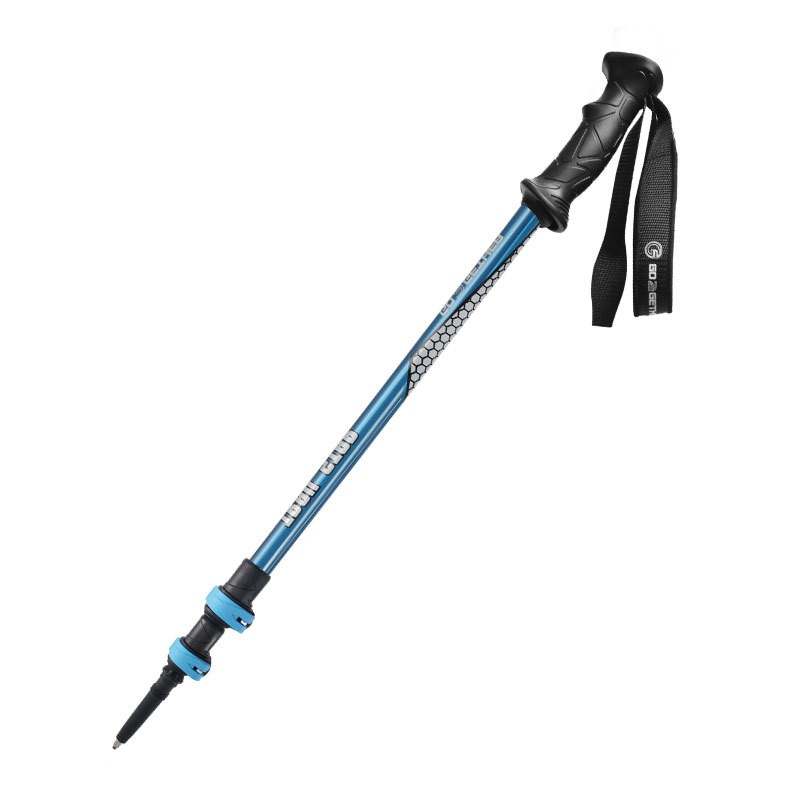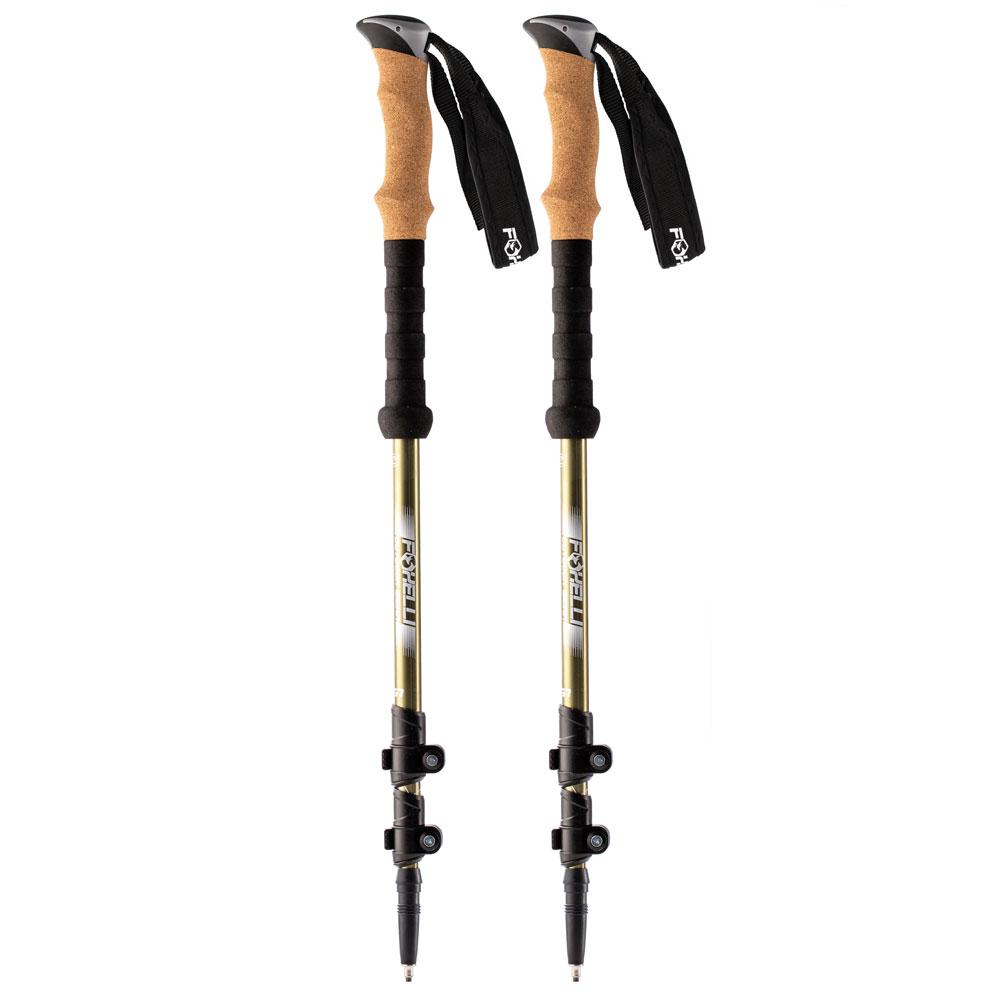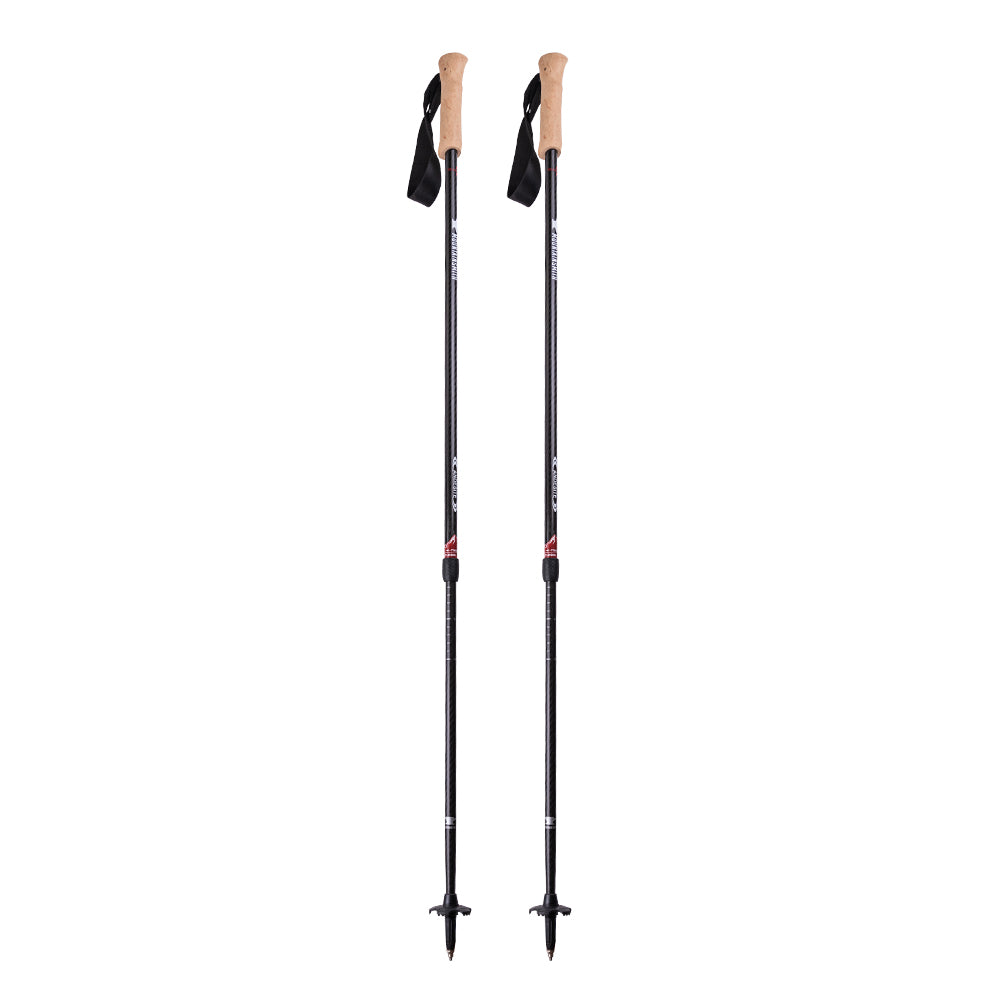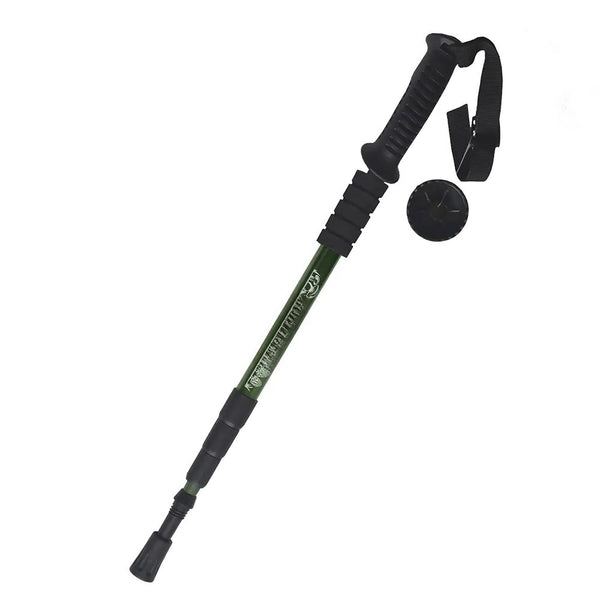Benefits of Using a Hiking Stick
Hiking stick provide several advantages to make your trekking experience safer and more enjoyable. Whether you are hiking on steep trails, uneven terrain, or long-distance paths, they offer practical support and added comfort.
Improved Stability and Balance
A hiking stick helps you maintain balance on uneven surfaces. It acts as a third point of contact, reducing the chances of slipping or tripping. This added stability is especially beneficial on rocky trails and during stream crossings.
Reduced Impact on Joints
Using a hiking stick reduces strain on your knees and ankles. It distributes your weight more evenly, which minimizes impact when going downhill. This is particularly helpful for those with joint issues or those carrying heavy backpacks.
Enhanced Endurance and Performance
A hiking stick improves your overall endurance by taking some pressure off your legs. It helps propel your movement forward, conserving energy. Over time, this leads to better performance and less fatigue during long hikes.

Types of Hiking Sticks
Choosing the right hiking stick is crucial for a better trekking experience. Different types suit different needs, terrains, and preferences. Below are the four main types of hiking sticks to consider:
Adjustable Trekking Poles
Adjustable trekking poles are versatile and allow users to customize their length. They are perfect for varying terrains, as shorter lengths suit uphill climbs and longer lengths support downhill hikes. These poles are ideal if multiple hikers need to share them or if you want flexibility.
Fixed-Length Hiking Sticks
Fixed-length hiking sticks do not adjust in size, offering simplicity and durability. They are best for flat trails and consistent hiking patterns. They are also lighter in weight, making them a solid choice for hikers who prioritize speed and simplicity.
Foldable or Collapsible Poles
Foldable poles, also called collapsible poles, are excellent for travel or when space is limited. These sticks can fold into smaller sections, fitting easily in backpacks. They are lightweight and great for hikers who often travel to different trail locations.
Wooden Hiking Sticks
Wooden hiking sticks offer a classic look and are made from solid, durable materials. They provide a sturdy and reliable option, especially for rugged terrains. However, they can be heavier and less convenient to carry compared to modern poles.
Each type of hiking stick has its own benefits. Choose based on the terrain, your hiking style, and personal comfort.

Features to Consider When Buying a Stick
Choosing the right hiking stick involves understanding the features that impact performance, durability, and comfort. Below are key details to consider for ensuring the best choice.
Material: Aluminum vs. Carbon Fiber
The material of a hiking stick greatly affects its weight and strength.
- Aluminum: Durable and affordable. It handles rough terrain well and resists wear and tear. However, it is heavier compared to carbon fiber.
- Carbon Fiber: Lightweight and ideal for long hikes. It reduces arm fatigue but is less durable than aluminum under extreme conditions.
Grips and Handles: Foam, Cork, or Rubber
Handles are essential for comfort and grip during your hike.
- Foam: Soft and absorbs sweat well. It is ideal for warm weather but may wear faster.
- Cork: Comfortable and molds to your hand over time. It reduces vibration and resists moisture.
- Rubber: Durable and good for cold, wet conditions. However, it might cause sweating in hot weather.
Adjustable Length and Locking Mechanisms
Telescoping poles that adjust in length provide flexibility for varying terrains.
- Adjustable-length sticks allow you to fine-tune for uphill climbs or downhill descents.
- Look for locking mechanisms like twist locks or lever locks to secure the desired length.
Shock Absorption Systems
Some hiking sticks have built-in shock absorption to reduce strain on your hands and joints.
- They are particularly helpful for long hikes or steep descents.
- Opt for poles with anti-shock springs if you prioritize joint comfort during impact-heavy treks.
Selecting the right combination of materials, handle type, adjustability, and shock absorption ensures a safer and more enjoyable hiking experience. Keep your terrain and personal needs in mind while shopping for your hiking stick.
How to Use a Stick Properly
Learning to use a hiking stick properly can enhance your hiking experience. Correct usage ensures better comfort, stability, and efficiency throughout your trek.
Adjusting the Height for Your Comfort
Set the hiking stick height based on your needs and terrain. When on flat ground, your stick should be adjusted so your arm bends at a 90-degree angle. For uphill sections, shorten the stick slightly to maintain stability. For downhill trails, lengthen the stick to give added support and balance.
Proper Technique for Uphill and Downhill
For uphill climbs, plant the hiking stick slightly ahead of your stride. Use it to push yourself forward. This technique reduces strain on your legs and boosts endurance. During downhill descents, place the stick ahead to absorb impact and maintain balance. It helps distribute weight away from your legs.
Using Wrist Straps Effectively
Wrist straps provide added control and convenience. Slide your hand up through the strap, ensuring it wraps securely. Grasp the handle while the strap supports your wrist. This lets you use the stick without tightly gripping it, reducing hand fatigue during long hikes.

Top Sticks for Different Terrains
Choosing the right hiking stick for your terrain ensures safety and comfort. Different trails require specific types of poles. Below are the top options for various terrains.
Sturdy Options for Rocky Trails
Rocky trails demand durable hiking sticks for stability and support.
- Opt for aluminum poles. They are strong and handle rugged terrain well.
- Look for sturdy grips, like cork or rubber, for reliable handling.
- Shock-absorption systems are useful to reduce impact on uneven surfaces.
- Examples include fixed-length hiking sticks or robust adjustable trekking poles.
Lightweight Choices for Long Hikes
Long-distance hikes require lightweight poles to prevent arm fatigue.
- Choose carbon fiber sticks for their lightness and easy portability.
- Collapsible or foldable designs are ideal, fitting well in backpacks.
- Opt for foam handles for comfortable grips over extended periods.
- Adjustable trekking poles are great for versatility and prolonged use.
Best Poles for Snowy or Icy Conditions
Snowy trails need poles with enhanced grip and stability.
- Poles with carbide or steel tips offer better traction on ice and snow.
- Rubberized grips are helpful for cold-weather hikes to keep hands steady.
- Adjustable poles allow for easier movement when trekking through snow.
- Shock-absorbing features help reduce strain during uneven winter terrain.
Selecting hiking sticks suited to your terrain enhances your experience. Prioritize comfort, durability, and adaptability.
Maintaining and Storing Your Stick
Proper care and storage maximize the lifespan of your hiking stick. Regular maintenance ensures performance and durability.
Cleaning After Use
Clean your hiking stick after every hike. Remove mud, dirt, and debris using water and a soft cloth. For sticky substances, use mild soap but avoid harsh chemicals. Pay extra attention to joints and locking mechanisms. Dry the stick completely to avoid rust or corrosion.
Storing in a Dry and Safe Place
Store your hiking stick in a dry location to prevent moisture damage. Avoid leaving it in extreme heat or direct sunlight. Disassemble adjustable sticks to release tension before storing. Use a dedicated hook or shelf to avoid bends or scratches.
Replacing Worn-Out Parts
Inspect your hiking stick regularly for damage. Replace worn-out tips, grips, or locking mechanisms promptly. Purchase parts directly from the manufacturer for compatibility. Timely repairs prevent further deterioration and ensure safe usage.
By cleaning, storing, and repairing your hiking stick, you ensure it stays reliable for all adventures.

Additional Hiking Gear to Complement Your Stick
To make your hiking experience even better, certain gear items are essential. They provide safety, comfort, and efficiency on your adventures. Below are some top recommendations to carry along with your hiking stick.
Backpack Essentials
A well-prepared backpack ensures you have everything needed for an enjoyable hike.
- Water and Hydration Gear: Carry enough water and consider a hydration bladder for convenience.
- Snacks and High-Energy Food: Pack lightweight, energy-dense snacks to keep your energy levels up.
- First Aid Kit: Always carry a small, well-equipped kit for emergencies.
- Weather Protection: Include a rain jacket, hat, or sunscreen depending on weather conditions.
- Multi-Tool or Knife: Useful for minor repairs, cutting, or unexpected situations.
Appropriate Footwear
Choosing the right footwear ensures comfort and reduces the risk of injury.
- Hiking Boots: Offer excellent ankle support and traction for rough terrain.
- Trail Runners: Lightweight and ideal for faster hikes on established trails.
- Socks: Use moisture-wicking socks to prevent blisters and keep feet dry.
- Gaiters: Protect your boots and lower legs from mud, water, or debris.
Stay confident on trails with reliable navigation tools.
- Map and Compass: Essential for areas without mobile service or clear signage.
- GPS Device or Smartphone: Helps track location, but always have a backup plan.
- Trail Guide: Familiarize yourself with maps or printed guides for key trail information.
- Whistle: Useful for signaling in case of emergencies.
Carrying these items along with your hiking stick enhances safety and makes your trek more enjoyable. Always plan for your terrain and trip length.
Common Mistakes to Avoid
Over-Relying on Sticks
While hiking sticks are beneficial, over-relying on them can hinder your balance. Do not use them as crutches. Instead, maintain your core strength and balance to ensure the sticks enhance your performance without becoming a crutch.
Ignoring Terrain Differences
Different terrains require specific techniques for optimal use of hiking sticks. Failing to adapt your approach when transitioning from flat ground to steep slopes can result in inefficiency and potential injury. Always assess the terrain and adjust your stick usage accordingly.
Neglecting Personal Fit
Hiking sticks come in various sizes and styles tailored for different users. Choosing a set that does not fit your height or style can lead to discomfort. Make sure you select hiking sticks that meet your individual needs for the best experience.

Embracing the Outdoor Lifestyle
Connecting with Nature
Embracing a lifestyle that includes hiking can deepen your connection to nature. Spending time outdoors allows you to appreciate the beauty around you while improving your physical fitness. Hiking promotes mental well-being through the calming effects of nature.
Setting Personal Goals
Developing hiking-related goals can motivate you to stay active. Set objectives such as climbing a specific mountain, completing a long trail, or improving your overall hiking speed. Working toward these goals can enhance your outdoor experience and provide a sense of accomplishment.
Promoting Health and Fitness
Hiking routinely offers significant health benefits. It improves cardiovascular health, enhances strength, and boosts overall fitness levels. Incorporating hiking into your lifestyle promotes a healthy and active routine that can positively impact well-being.
Preparing for Your Next Hiking Adventure
Researching the Trail
Before embarking on a hike, take the time to research the trail. Understand its difficulty level, distance, and elevation changes. Knowledge about the route helps you prepare physically and mentally for the challenges ahead.
Packing Essentials for the Trail
Proper preparation includes packing all necessary items for a successful hike. Water, snacks, a map, and a first-aid kit are crucial essentials to include. Verify that you have your hiking stick and any additional gear before you depart.
Planning for Safety
Safety should be a top priority in your hiking preparations. Inform someone about your planned route and expected return time. Carrying a charged cell phone and identifying emergency contacts provides an added layer of security during your adventure.
The Versatile Hiking Stick
Summary of Key Benefits
The hiking stick is a versatile tool for any outdoor enthusiast. It enhances stability, reduces strain on joints, and improves overall performance. Understanding how to use and care for hiking sticks results in better hiking experiences.
Embracing Adventure
As you take to the trails, embrace the adventure that hiking offers. Carrying your hiking stick can make navigating terrain easier and more enjoyable. Allow your love for nature to inspire your journeys on the various trails and landscapes available.
Enjoy the Journey
Whether you are a novice or an experienced hiker, make the most of each hiking experience. Learn, explore, and enjoy every moment spent outdoors. Your commitment to improving your skills and embracing the journey will elevate your love for trail running and hiking. With the right gear and knowledge, including your trusty hiking stick, you are prepared to conquer any terrain.
